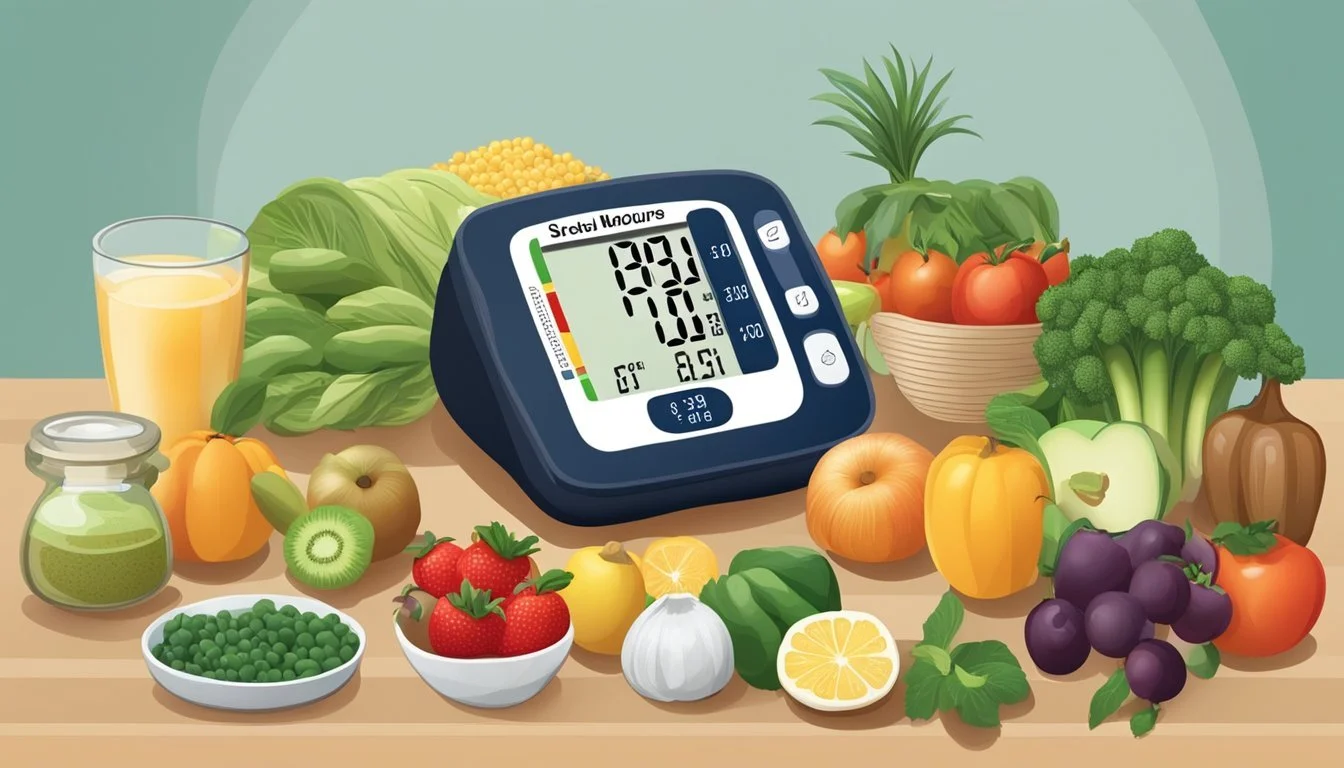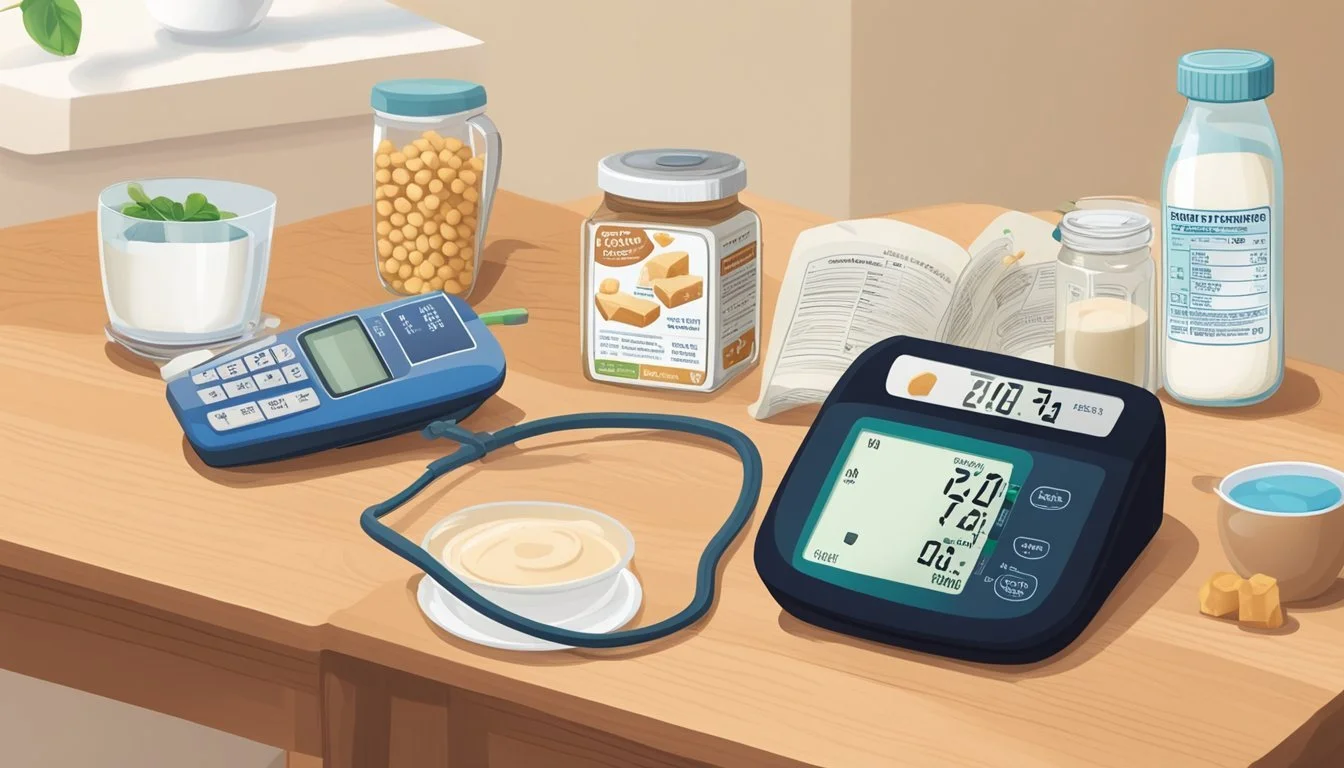Is It Okay to Eat Soy Products with Hypertension?
Unveiling the Truth
Individuals with hypertension often seek dietary adjustments to help manage their blood pressure. Among various foods, soy products stand out due to their potential health benefits and concerns. Soybeans and soy-based foods are a staple in many diets and are known for their high protein content and potential cardiovascular benefits.
However, the relationship between soy products and blood pressure is not entirely straightforward. Some studies suggest that certain soy products, especially those that are fermented like miso and natto, may have a positive effect on blood pressure. These benefits are less clear with other unfermented soy products such as tofu. The nuances of soy's effects on hypertension may depend on the form in which it is consumed and the individual's overall dietary pattern.
Soy products also contain isoflavones, which have estrogen-like properties that have raised questions about their safety for certain individuals. While whole soy foods are generally considered safe for most people, including those with hypertension, soy isoflavone supplements, and highly processed soy ingredients might warrant more cautious consumption. As with any dietary consideration, it is important for individuals with high blood pressure to discuss the inclusion of soy products in their diet with a healthcare provider.
Understanding Hypertension
Hypertension, commonly known as high blood pressure, is a prevalent cardiovascular condition that has significant health implications if not managed properly. This condition can lead to serious health events such as stroke and heart disease if left unchecked. This section will explore the fundamental aspects of blood pressure, the risk factors for developing high blood pressure, and the effects of hypertension.
Blood Pressure Basics
Blood pressure is the force that circulating blood exerts against the walls of blood vessels. It is measured in millimeters of mercury (mmHg) and recorded with two numbers: systolic blood pressure, which represents the pressure when the heart beats, and diastolic blood pressure, which measures the pressure when the heart is at rest between beats. A normal blood pressure reading is typically around 120/80 mmHg.
Normal Blood Pressure: Systolic <120 mmHg and Diastolic <80 mmHg
Elevated Blood Pressure: Systolic 120-129 mmHg and Diastolic <80 mmHg
Hypertension: Systolic ≥130 mmHg or Diastolic ≥80 mmHg
Risk Factors for High Blood Pressure
There are several risk factors for developing high blood pressure. These can be categorized into modifiable and non-modifiable factors. Modifiable risk factors include unhealthy diet, lack of physical activity, obesity, and tobacco use. Conversely, non-modifiable risk factors relate to elements out of one's control, like genetics, age, and family history of hypertension.
Modifiable Risk Factors: Diet, exercise, weight, smoking
Non-Modifiable Risk Factors: Genetics, age, family history
Effects of Hypertension
Uncontrolled hypertension can lead to damage in various organ systems over time. Specifically, it can lead to cardiovascular diseases, including heart attack, stroke, heart failure, and arterial aneurysms. Additionally, it can cause chronic kidney disease and is one of the leading causes of death worldwide.
Cardiovascular risks: Heart attack, stroke, heart failure
Other risks: Kidney disease, vision loss, sexual dysfunction
By understanding blood pressure, recognizing the risk factors of hypertension, and comprehending its potential effects, individuals can make informed decisions about their health. While some risk factors cannot be changed, others can be managed with lifestyle modifications and medical treatment.
The Role of Diet in Managing Hypertension
Managing hypertension effectively involves both dietary modifications and lifestyle changes. Incorporating specific foods into the diet and adhering to exercise regimens are key strategies in controlling high blood pressure.
Salt and its Impact on Blood Pressure
Excessive salt intake has a direct correlation with elevated blood pressure. The body holds extra water to wash the salt away, increasing the volume of blood and thus the pressure on blood vessels. Adults should aim to consume less than 2,300 mg of sodium per day, equivalent to approximately one teaspoon of salt.
Avoid: High-sodium processed foods, table salt
Include: Herbs, spices for alternative seasoning
Recommended Dietary Changes
A heart-healthy diet can significantly impact blood pressure levels. Key components of such a diet include:
Fruits and Vegetables: Rich in potassium, they help balance the negative effects of salt and reduce the strain on the cardiovascular system. Aim for leafy greens, berries, and citrus fruits.
Whole Grains: They contribute to overall heart health.
Healthy Fats: Sources like avocados and olive oil can help manage hypertension.
Legumes: Including beans and lentils for fiber and nutrients.
Fatty Fish: Rich in omega-3 fatty acids, which are beneficial for heart health.
Limited Alcohol and Caffeine: Excessive consumption can lead to increased blood pressure.
Reduced Added Sugars and Processed Foods: These contribute to weight gain and higher blood pressure.
Lifestyle Changes and Exercise
In conjunction with dietary adjustments, lifestyle practices play a pivotal role:
Regular physical activity, such as 150 minutes of moderate exercise per week, can lower blood pressure and improve heart health.
Weight management is crucial, as excess weight strains the heart.
Limiting alcohol intake and quitting smoking can markedly improve blood pressure levels.
Stress management techniques can also be beneficial as part of a comprehensive approach to hypertension.
By implementing these targeted dietary and lifestyle modifications, individuals with hypertension can manage their condition more effectively.
Soy Products and Cardiovascular Health
Soy products have been closely studied for their impact on cardiovascular health, specifically in the context of heart disease and cholesterol management.
Soy and Heart Disease
Soy foods are a source of isoflavones, a type of phytoestrogen that has been linked to a reduced risk of heart disease. Clinical studies suggest a correlation between the intake of soy products and a decrease in the risk for developing hypertension, which is a risk factor for cardiovascular disease. However, it is fermented soy products, such as miso and natto, that have shown significant results, rather than unfermented soy products like tofu.
Soy Protein vs. Animal Protein
Replacing animal protein with soy protein might contribute to lowering levels of harmful low-density lipoprotein (LDL) cholesterol, which is often implicated in the development of heart disease. A key study indicates that consuming around 50 grams of soy protein per day could reduce LDL cholesterol by approximately 12%. The American Heart Association notes that while soy can lower cholesterol, the reduction may not be enough to significantly impact health when soy is consumed in isolation without other dietary changes.
Phytoestrogens in Soy
Isoflavones, including genistein, are phytoestrogens found in soy that may have numerous health benefits. They exhibit antioxidant properties and might contribute positively to cardiovascular health. Isoflavones can also mimic estrogen in the body, potentially having effects on cholesterol levels and arterial health. Soy foods are also rich in polyunsaturated fats, which are considered heart-healthy when they replace saturated fats in the diet.
Health Benefits of Soy in the Diet
Soy products, including tofu, edamame, and natto, are recognized for their role in a balanced diet, offering a wealth of nutrients beneficial for individuals with hypertension and overall health.
Nutritional Profile of Soy
Soybeans contain essential vitamins and minerals, serving as a rich source of calcium, magnesium, and potassium. These nutrients contribute to the maintenance of normal blood pressure levels. Additionally, soy is loaded with antioxidants which aid in cellular health.
Fiber and Protein Content
Soy is a high-quality plant protein that rivals that of meat. It provides all the essential amino acids necessary for human health. The fiber in soy helps with digestive health, and due to its potential role in satiety, it may assist in weight management, indirectly supporting healthy blood pressure levels.
Soy and Cholesterol Levels
Regular consumption of soy protein has been linked to a reduction in LDL cholesterol, often referred to as "bad" cholesterol. Low-fat, high-protein soy products contribute to improved cholesterol profiles, which is a key area in managing hypertension.
Soy Consumption for Postmenopausal Women
For postmenopausal women, soy is particularly beneficial due to its isoflavones, a group of phytoestrogens. These compounds can mimic estrogen in the body, potentially alleviating menopausal symptoms such as hot flashes. Additionally, the calcium in soy can support bone health, countering the risk of osteoporosis in this demographic.
Soy-Based Foods and Preparations
When discussing soy and hypertension, it's important to consider the different types of soy products available. Ranging from whole soy foods to fermented products and soy alternatives, the preparation and processing of soy can influence its health benefits.
Whole Soy Foods vs. Processed Soy
Whole soy foods refer to items that are minimally processed, such as soybeans, tofu, edamame, and soy nuts. These contain all parts of the soybean and maintain a higher level of natural nutrients. In contrast, processed soy products like soy protein isolate, found in nutrition bars, and soy-based meat alternatives often remove components of the soybean. It's crucial for individuals with hypertension to be aware that processed soy can have varying levels of sodium, which is an important consideration in managing blood pressure.
Whole Soy Foods:
Edamame – young soybeans often served boiled or steamed.
Soy nuts – roasted whole soybeans.
Tofu – coagulated soy milk pressed into solid blocks.
Processed Soy:
Soy protein isolate – concentrated soy protein often used in commercial food products.
Nutrition bars – may contain soy protein isolate or textured vegetable protein.
Fermented Soy Products
Fermented soy products, including miso, tempeh, and soy sauce, are made through a natural culturing and controlled fermentation process that binds soybeans into a cake form or transforms them into condiments. Fermentation affects the composition of soy, sometimes enhancing its digestibility and nutritional availability. For those with hypertension, these fermented foods can offer flavor and nutrients, but it's important to monitor sodium content in products like soy sauce.
Fermented Soy Foods:
Miso – fermented soybean paste often used in soups.
Tempeh – fermented whole soybeans pressed into a compact cake.
Soy Sauce – traditionally fermented from soybeans and wheat, can be high in sodium.
Popular Soy Foods and Alternatives
A variety of soy foods have gained popularity due to their versatility and plant-based protein content. Soy milk serves as a dairy alternative and is often fortified with vitamins and minerals. Nutty-tasting soy nuts are a crunchy snack that is rich in protein and dietary fiber. While these alternatives can offer nutritious benefits, individuals with hypertension need to consider the added ingredients and nutritional profile of each soy product to ensure they align with healthful dietary patterns.
Common Soy Alternates:
Soy Milk – available fortified with calcium and vitamin D, low in saturated fat.
Soy Nuts – may offer a good source of omega-3 fatty acids.
Tofu – can be used in both savory and sweet dishes, versatile in recipes.
When choosing soy foods, individuals with hypertension should opt for those with low sodium and check for additives that may affect blood pressure. Whole and fermented soy products generally retain more nutritional integrity compared to heavily processed options.
Potential Risks and Considerations
When considering soy products as part of a diet for managing hypertension, it is essential to be aware of potential risks and personal health conditions that may influence the appropriateness of soy intake.
Soy Allergies and Sensitivities
Individuals with soy allergies should avoid soy products altogether, as they can trigger adverse effects ranging from mild to severe anaphylactic reactions. Sensitivities to soy can also result in digestive discomfort and immune reactions in some people.
Soy and Hormone-Sensitive Conditions
Soy contains phytoestrogens, which are naturally occurring compounds similar to estrogen. There is a discussion among researchers about the potential impact of these compounds on hormone-sensitive conditions, such as breast cancer and prostate cancer. While some clinical trials have suggested that soy might have beneficial effects, others advise caution, especially until more definitive results from longitudinal studies and meta-analyses are available.
Breast Cancer: Evidence on soy's effects on breast cancer is mixed. Some studies indicate protective effects, meanwhile others suggest potential risks for individuals with a history of estrogen-positive breast cancer due to the phytoestrogens present in soy.
Prostate Cancer: Research has shown a potential protective effect of soy consumption against prostate cancer, but all conclusions must be drawn carefully until more extensive research provides clear guidelines.
Interactions with Medications
Soy products may interact with certain medications, potentially altering their efficacy. Individuals with hypertension often take medications to manage their condition, and soy components could interfere with these drugs. It is advised that they consult with healthcare professionals before making significant dietary changes.
Research and Expert Opinions
Recent research has highlighted potential benefits of soy consumption for individuals with hypertension. This section explores various research studies, long-term health implications, and the official guidelines related to soy products and blood pressure management.
Clinical Studies on Soy and Blood Pressure
Several clinical trials and cohort studies point to a connection between soy intake and blood pressure reduction. For instance, the China-PAR project, a large-scale cohort study, observed that a daily intake of at least 125 grams of soybean products correlates with a 27% lower risk of developing hypertension. These findings are bolstered by clinical reviews suggesting that soy can be an effective component in a diet aimed at managing blood pressure.
Soy Consumption and Long-term Health
Incorporation of soy in diets has been frequently associated with positive cardiovascular outcomes. Dietitians and doctors often consider soy products as a part of dietary patterns that support cardiovascular health. Long-term consumption of soy has been observed to have a lowering effect on blood pressure, which is a key factor in reducing cardiovascular risk.
Guidelines and Health Claims
The FDA has acknowledged the role of soy in contributing to heart health. Health claims approved by the FDA often reflect the consensus in the scientific community regarding the benefits of certain food items. While specifics can vary, guidelines typically recommend incorporating plant-based proteins like soy as part of a balanced diet to aid in hypertension management and overall cardiovascular health.
Incorporating Soy into a Heart-Healthy Diet
Soy can play a beneficial role in a diet aimed at managing hypertension, mostly due to its potential effects on cholesterol levels and cardiovascular health. Managing saturated fat intake is crucial, and soy provides a protein-rich alternative to red meat (What wine goes well with red meat?).
Creating a Balanced Soy-Based Meal Plan
A heart-healthy diet incorporating soy begins with a balance of nutrients. Soy protein can be a core part of daily intake, as it's a complete protein providing all essential amino acids. A balanced meal plan may feature legumes like soybeans and soy-based products such as tofu and tempeh. These can be complemented with vegetables, whole grains, and fruit to ensure a nutrient-dense diet. Incorporating beans and fish into the diet also helps to provide variety and essential fatty acids.
Soy Alternatives for Reducing Saturated Fats
Soy products offer an alternative protein source to red meat, which typically contains higher levels of saturated fats. By replacing red meat with soy options, individuals may reduce their saturated fat intake, which is associated with lower cholesterol levels and a decreased risk of cardiovascular disease. For instance:
Tofu can replace beef in a stir-fry.
Edamame can serve as a snack instead of processed items.
Aligning Soy Consumption with Dietary Guidelines
Regular consumption of soy should align with dietary guidelines that emphasize a variety of protein sources and a limited intake of saturated fat. For individuals with hypertension:
Aim for at least 25 grams of soy protein daily.
Ensure soy products are part of a diet low in saturated fat and cholesterol.
Integrate other heart-healthy proteins like fish, which provides omega-3 fatty acids, to diversify the benefits within the diet.










